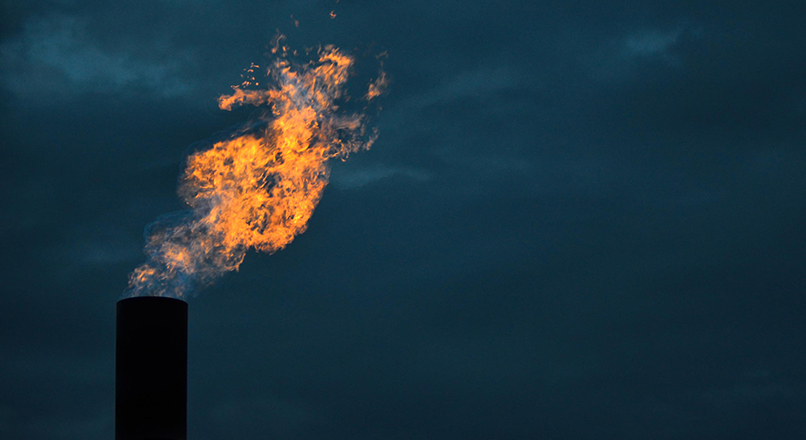
Methane pledge key to unlocking climate goals
Reading time: 4 minutes
February 23, 2022
While the most recent United Nations climate change conference may not have produced the kind of headline-grabbing unified stance against climate change as COP21 where the Paris Agreement was ratified, COP26’s achievement on methane could turn out to be a significant turning point for the battle against global warming.
In Glasgow leaders of more than 100 countries signed a pledge to reduce their methane emissions 30 percent by 2030, a milestone that’s been lauded as an important stepping stone towards meeting climate warming goals under the Paris Agreement. This is estimated to eliminate over 0.2˚C warming by 2050.
Participants joining the pledge have agreed to take voluntary actions to contribute to this collective effort.
Described by the President of the European Commissions Ursula von der Leyen as “the lowest hanging fruit in our battle to slow down climate change”, methane gas is estimated to be 25 times more damaging for the environment than CO2 because of its ability to trap heat in the atmosphere.
EU Commission President von der Leyen and US President Joe Biden – leaders of the world’s third and sixth largest methane emitters, respectively – announced the pledge in September 2021. The world leaders then used the forum to gather support of other major emitters accounting for more than 40% of global emissions of methane based on Environmental Protection Agency emissions estimates. Several large emitters including China, Russia and India have not yet joined the Global Methane Pledge.
Methane is described as a powerful and short-lived climate pollutant which drives climate change and harms human and ecosystem health by contributing to the formation of ground-level ozone.
Over the past decade, global methane emissions have risen at a rate faster than at any time in the last 30 years.
While methane has both human and natural sources, recent increases are attributed to activity in three anthropogenic sectors, namely fossils fuels, waste and agriculture. Landfills and waste, alongside oil and gas production and agriculture are the biggest contributors to methane in the atmosphere.
Reducing methane presents the greatest opportunity available today to simultaneously address our interlinked planetary crises and make peace with nature, Inger Andersen, Under-Secretary-General of the United Nations and Executive Director of the UN Environment Programme noted in the UN’s Global Methane Assessment.
Humanity is facing three systemic and escalating planetary crises: the climate crisis, the biodiversity and nature crisis, and the pollution and waste crisis, Ms Andersen highlighted.
These crises are not independent but linked and often stem from the same sources and unsustainable models of consumption and production, she noted. These links provide an opportunity to identify and deploy solutions which deliver multiple-benefits and the ambitious emissions reductions needed to overcome these crises.
Current methane concentrations are well above those needed to achieve climate reduction targets.
According to the 2018 Intergovernmental Panel on Climate Change Global Warming of 1.5° C report, Paris Agreement targets cannot be achieved without immediately reducing methane along with carbon dioxide and all other climate forcing emissions.
Energy from waste facilities will be one of the leading infrastructure solutions to assist in the removal of methane in line with global targets, and our infrastructure team are focused on capitalising on these opportunities.
Our Renewable energy assets
Important information
All data sources are independently verified and can be evidenced by Igneo Infrastructure Partners.
This material is for general information purposes only. It does not constitute investment or financial advice and does not take into account any specific investment objectives, financial situation or needs. This is not an offer to provide asset management services, is not a recommendation or an offer or solicitation to buy, hold or sell any security or to execute any agreement for portfolio management or investment advisory services and this material has not been prepared in connection with any such offer. Before making any investment decision you should consider, with the assistance of a financial advisor, your individual investment needs, objectives and financial situation.
We have taken reasonable care to ensure that this material is accurate, current, and complete and fit for its intended purpose and audience as at the date of publication. No assurance is given or liability accepted regarding the accuracy, validity or completeness of this material and we do not undertake to update it in future if circumstances change.
To the extent this material contains any expression of opinion or forward-looking statements, such opinions and statements are based on assumptions, matters and sources believed to be true and reliable at the time of publication only. This material reflects the views of the individual writers only. Those views may change, may not prove to be valid and may not reflect the views of everyone at Igneo Infrastructure Partners or First Sentier Investors.
About First Sentier Investors
References to ‘we’, ‘us’ or ‘our’ are references to Igneo Infrastructure Partners or First Sentier Investors (as applicable). First Sentier Investors is a global asset management business which is ultimately owned by Mitsubishi UFJ Financial Group. Igneo Infrastructure Partners is an unlisted infrastructure asset management business and is part of the First Sentier Investors Group.
We communicate and conduct business through different legal entities in different locations. This material is issued in:
- Australia and New Zealand by First Sentier Investors (Australia) RE Ltd, authorised and regulated in Australia by the Australian Securities and Investments Commission (AFSL 240550; ABN 13 006 464 428)
- European Economic Area by First Sentier Investors (Ireland) Limited, authorised and regulated in Ireland by the Central Bank of Ireland (CBI reg no. C182306; reg office 70 Sir John Rogerson’s Quay, Dublin 2, Ireland; reg company no. 629188)
- Hong Kong by First Sentier Investors (Hong Kong) Limited and has not been reviewed by the Securities & Futures Commission in Hong Kong. First Sentier Investors and Igneo Infrastructure Partners are business names of First Sentier Investors (Hong Kong) Limited.
- Singapore by First Sentier Investors (Singapore) (reg company no. 196900420D) and this advertisement or material has not been reviewed by the Monetary Authority of Singapore. First Sentier Investors (registration number 53236800B) and Igneo Infrastructure Partners (registration number 53447928J) are business divisions of First Sentier Investors (Singapore).
- Japan by First Sentier Investors (Japan) Limited, authorised and regulated by the Financial Service Agency (Director of Kanto Local Finance Bureau (Registered Financial Institutions) No.2611)
- United Kingdom by First Sentier Investors International IM Limited, authorised and regulated by the Financial Conduct Authority (reg. no. SC079063, reg office 23 St Andrew Square, Edinburgh, Scotland, EH2 1BB)
- United States by First Sentier Investors (US) LLC, authorised and regulated by the Securities Exchange Commission (RIA 801-93167)
- other jurisdictions, where this document may lawfully be issued, by First Sentier Investors International IM Limited, authorised and regulated in the UK by the Financial Conduct Authority (FCA ref no. 122512; Registered office: 23 St. Andrew Square, Edinburgh, EH2 1BB; Company no. SC079063).
To the extent permitted by law, MUFG and its subsidiaries are not liable for any loss or damage as a result of reliance on any statement or information contained in this document. Neither MUFG nor any of its subsidiaries guarantee the performance of any investment products referred to in this document or the repayment of capital. Any investments referred to are not deposits or other liabilities of MUFG or its subsidiaries, and are subject to investment risk, including loss of income and capital invested.
Copyright © (2025) First Sentier Investors
All rights reserved.

